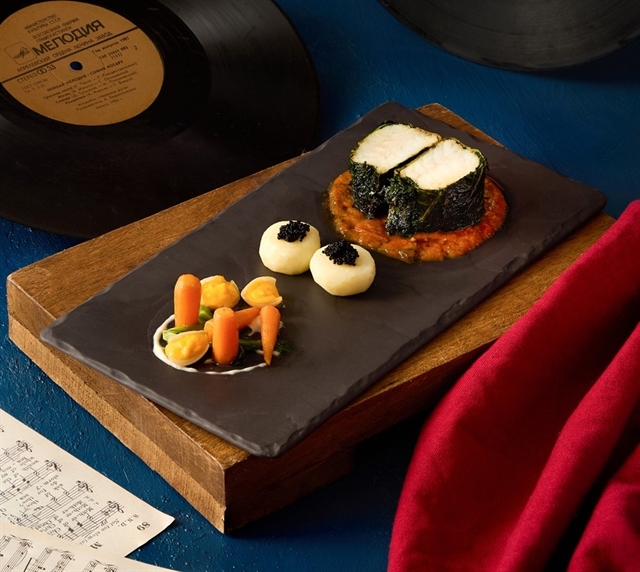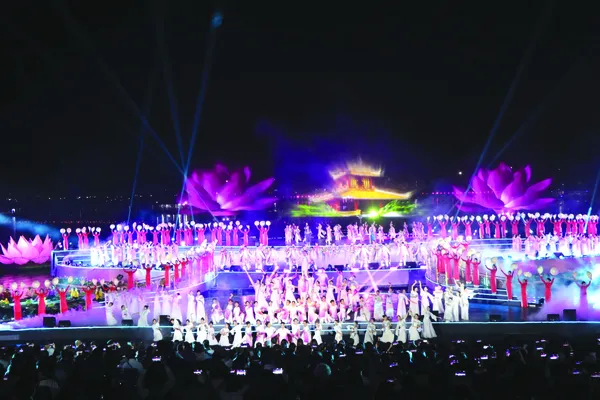 Features
Features

Bình Tây, one of the southern region’s biggest wholesale markets, is seeing more than double its average number of visitors in the weeks before the holiday season.
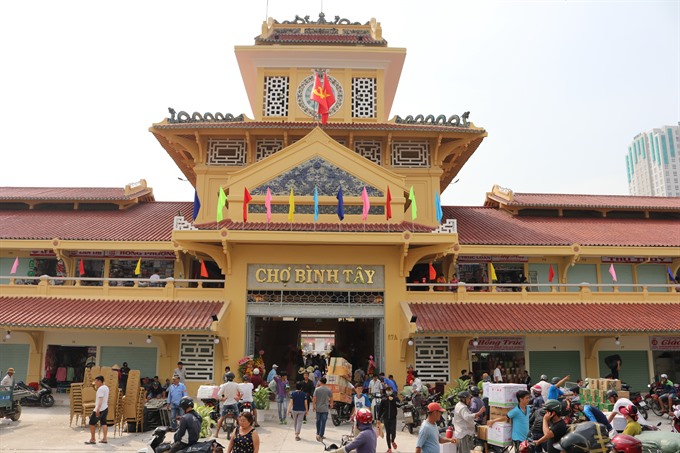 |
| Bình Tây, one of the region’s biggest wholesale markets, is seeing more than double its average number of visitors as the traditional Tết (Lunar New Year) holiday approaches. (Photo by Ngọc Diệp) |
The 90-year-old Bình Tây Market in District 6 is busier than ever weeks before the traditional Tết (Lunar New Year) holiday season. Thu Anh reports.
Bình Tây, one of the southern region’s biggest wholesale markets, is seeing more than double its average number of visitors in the weeks before the holiday season.
Last month, the market’s shop owners began preparing for the year’s biggest business season, hoarding thousands of Vietnamese items.
More than 1,446 stalls in Bình Tây are selling a wide variety of goods, including quality food, garments, footwear, handicrafts and oriental medicinal herbs.
“Not many markets in HCM City can offer their customers as many products and services as Bình Tây,” Nguyễn Anh Việt, a member of the market’s management board, said.
“To prepare for Tết, shop owners are working with dealers from the provinces of the Mekong River Delta, Cambodia, Laos and China, who’ve delivered several tonnes of goods each day.”
“We’ve allowed our regular dealers to postpone payment until they’ve sold their products,” he added.
This Tết, traditional Vietnamese clothes made of silk and cotton, footwear from small factories, and foodstuff like fried seafood that can be stored for months are favourite products of locals and tourists.
Garment shop owner Thái Thị Hương, whose parents once sold clothing at Bình Tây, can speak English, Khmer and Chinese. Her shop offers handbags and clothes made by small factories in rural districts and neighbouring provinces such as Bình Dương and Đồng Nai.
“My customers are free to bargain, but many shops offer fixed prices,” said Hương, who often begins her day at 5am at the market.
Hương regularly works with dealers in Cambodia and Laos. "We collect goods once a month, mostly garments and footwear, and pack them into containers to export by road to our partners."
She spent nearly VNĐ300 million (US$12,800) to store products for Tết. Her regular dealers from southern provinces began ordering late last month.
In November, Hương and other shop owners reopened their business at Bình Tây after moving to another location in District 6 two years ago when the market was closed for repairs and upgrade.
“It’s too early to predict how much I will sell this season. I hope for a good ‘harvest’ this Tết as many local and foreign visitors have come since the market reopened,” said Hương.
Hương signed a 10-year contract with the market’s management board after her 20-year contract ended late last year.
Bùi Thị Tuyết Mai, who owns a confectionery shop, said: “We enjoy working with dealers from Cambodia and Laos because our culture and lifestyle are familiar to theirs. We know what they want and try our best to satisfy their demands.”
Mai’s shop offers traditional sweet products or mứt at competitive prices, VNĐ120,000 (US$6)-190,000 ($10) per kilogram. The prices are 5-7 per cent higher than in previous months.
"Traditionally, Vietnamese like fruit preserves during Tết. They believe the sweet flavour will bring good luck in the New Year,” said Mai, adding that traditional sugared kumquat, lotus seeds, coconut, squash, soursop and sweet potato are popular.
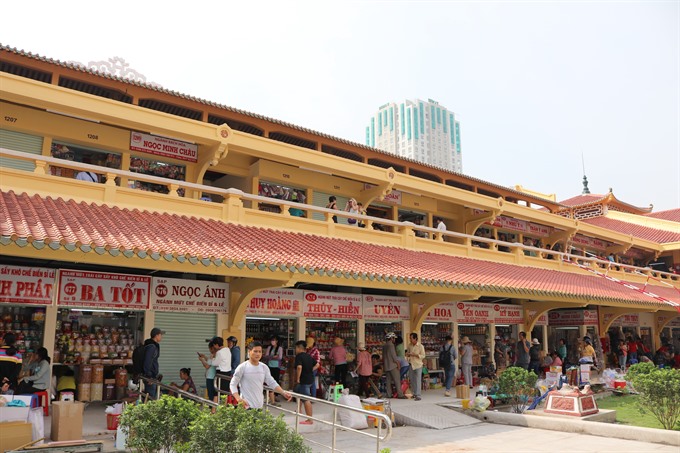 |
| The 90-year-old Bình Tây market was built on 25,000 sq metres of land in Sài Gòn in 1928 by Quách Đàm, a Chinese businessman who donated the market to the city in 1930. It reopened in November after nearly two years of renovation. (Photo by Ngọc Diệp) |
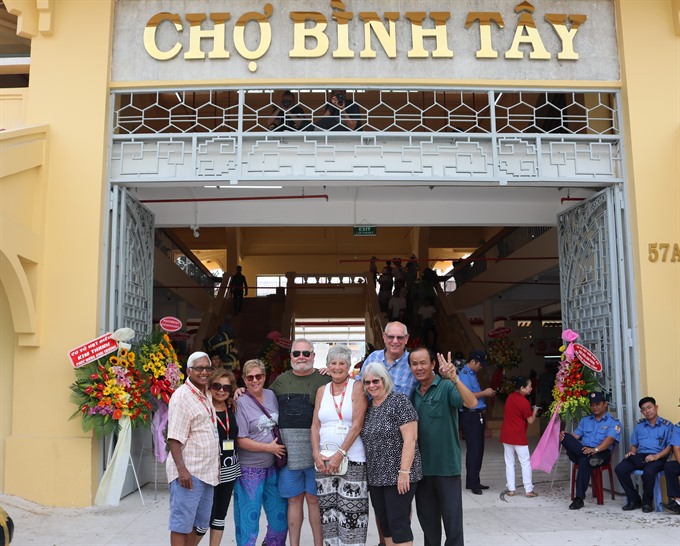 |
| Foreign visitors enjoy their tour to Bình Tây market. ( Photo by Ngọc Diệp) |
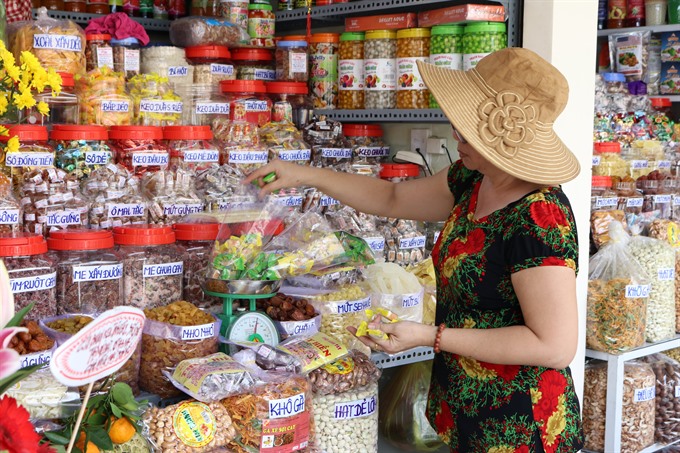 |
| Shop owners at Bình Tây hope for a good ‘harvest’ this Tết as many local and foreign visitors have come since the market reopened. (Photo by Ngọc Diệp) |
Next week, Mai and her colleagues will deliver a half tonne of Vietnamese confectionery and jam products to her regular dealers in Phnom Penh.
Her Cambodian customers are preparing for their biggest holiday, Khmer New Year (Cambodian Lunar New Year) in April.
These days, visitors to Bình Tây are surprised to discover piles of fake currencies in US dollars and Vietnamese đồng as well as rows of miniature paper replicas of consumer goods such as houses, motorbikes and other luxuries.
The paper items, called vàng mã (votive paper), are highly popular as it is traditional to burn them on the death anniversary of a loved one and on every full-moon day, as well as during Tết.
An ethnic Hoa (Vietnamese with Chinese origin) shop owner, A Cón, said he sold several dozens of tonnes of paper each year.
“People believe the offerings will cross over to the spirit world and provide luck to the deceased,” said Cón, adding that his shop had been opened for more than 10 years.
Cón earns VNĐ5,000 (20 US cents) in profit for every one million đồng of fake currencies his shop sells.
Every day, his shop prints billions of fake đồng and millions of fake US dollars, and even more on the days before Lunar New Year, when many people buy joss items to offer to deceased loved one or to forsaken spirits.
Despite the abundance of modern supermarkets and shopping malls in HCM City, niche markets still attract customers who love discovering unusual or traditional products and items that remind them of the past, Việt said.
“Purchases in Bình Tây are expected to increase 70 per cent in the last days of the season, which this year fall between February 1 and 4, compared to last season,” he added.
Việt said that Bình Tây market was officially recognised as an architectural relic by the city’s People’s Committee last year.
“We have worked closely with leading tourist agencies in the region, including Sài Gòn Tourist, to offer Bình Tây market tours for thousands of local and foreign visitors. We want to introduce the specific flavours of HCM City culture and Bình Tây market’s lifestyle to visitors.”
Old market
Trương Kim Quân, director of the HCM City Monuments Conservation Centre, said that Bình Tây market was built on 25,000 sq.m of land in 1928.
“A Chinese businessman named Quách Đàm in 1930 built and donated the market to the city authorities. In the past, it was sometimes called Quách Đàm market by locals. It was designed by a French architect who mixed traditional Chinese and East Asian architectural styles,” he said.
The market has 12 gates. The one on Tháp Mười Street is decorated with a clocktower, which is one of the city’s symbols.
After many decades, the market fell into disrepair, with exposed steel beams, damaged walls and a leaking roof.
Ngô Thanh Luông, chairman of District 6’s People’s Committee, said: “In 2016, we closed the market to renovate at a cost of VNĐ104 billion (US$4.5 million). The money was mostly from donations collected from the market’s shop owners over a period of 10 years.”
Luông said that local authorities worked with experts from HCM City Monuments Conservation Centre during the renovation.
“We really worked hard to retain the market’s original architecture,” he said.
Bình Tây, which now is located on 28,000 sq.m of land, borders Tháp Mười, Lê Tấn Kế, Phạm Văn Khỏe and Trần Bình streets in District 6.
The market has new public toilets, standby generators, security camera systems, customer information rooms, cable and telephone lines, internet connections, and fire safety systems.
With a staggering number of stalls, 784 on the ground floor and 698 on the first floor, customers looking for the perfect holiday items will not walk away empty-handed! — VNS

